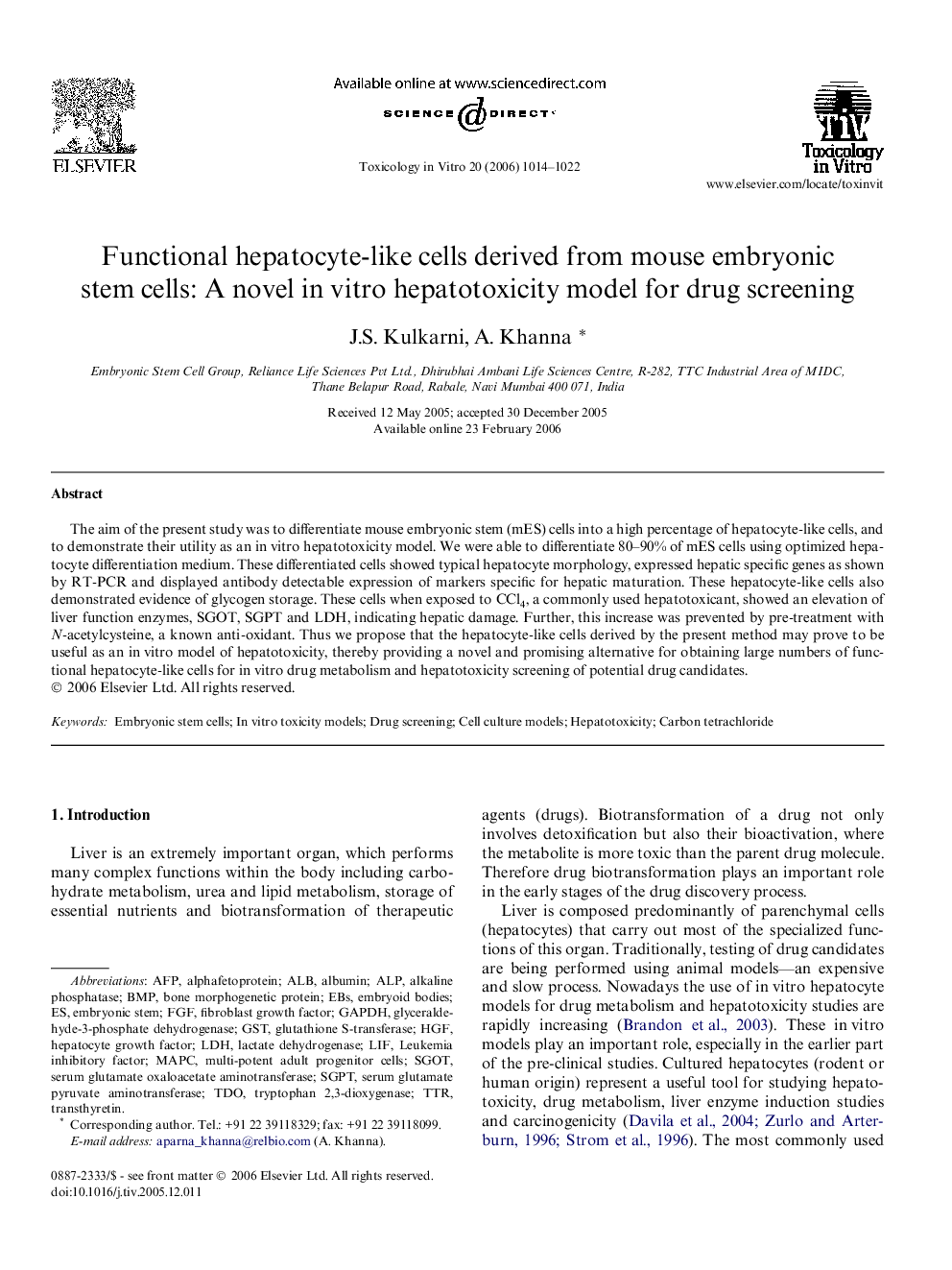| Article ID | Journal | Published Year | Pages | File Type |
|---|---|---|---|---|
| 2603474 | Toxicology in Vitro | 2006 | 9 Pages |
The aim of the present study was to differentiate mouse embryonic stem (mES) cells into a high percentage of hepatocyte-like cells, and to demonstrate their utility as an in vitro hepatotoxicity model. We were able to differentiate 80–90% of mES cells using optimized hepatocyte differentiation medium. These differentiated cells showed typical hepatocyte morphology, expressed hepatic specific genes as shown by RT-PCR and displayed antibody detectable expression of markers specific for hepatic maturation. These hepatocyte-like cells also demonstrated evidence of glycogen storage. These cells when exposed to CCl4, a commonly used hepatotoxicant, showed an elevation of liver function enzymes, SGOT, SGPT and LDH, indicating hepatic damage. Further, this increase was prevented by pre-treatment with N-acetylcysteine, a known anti-oxidant. Thus we propose that the hepatocyte-like cells derived by the present method may prove to be useful as an in vitro model of hepatotoxicity, thereby providing a novel and promising alternative for obtaining large numbers of functional hepatocyte-like cells for in vitro drug metabolism and hepatotoxicity screening of potential drug candidates.
